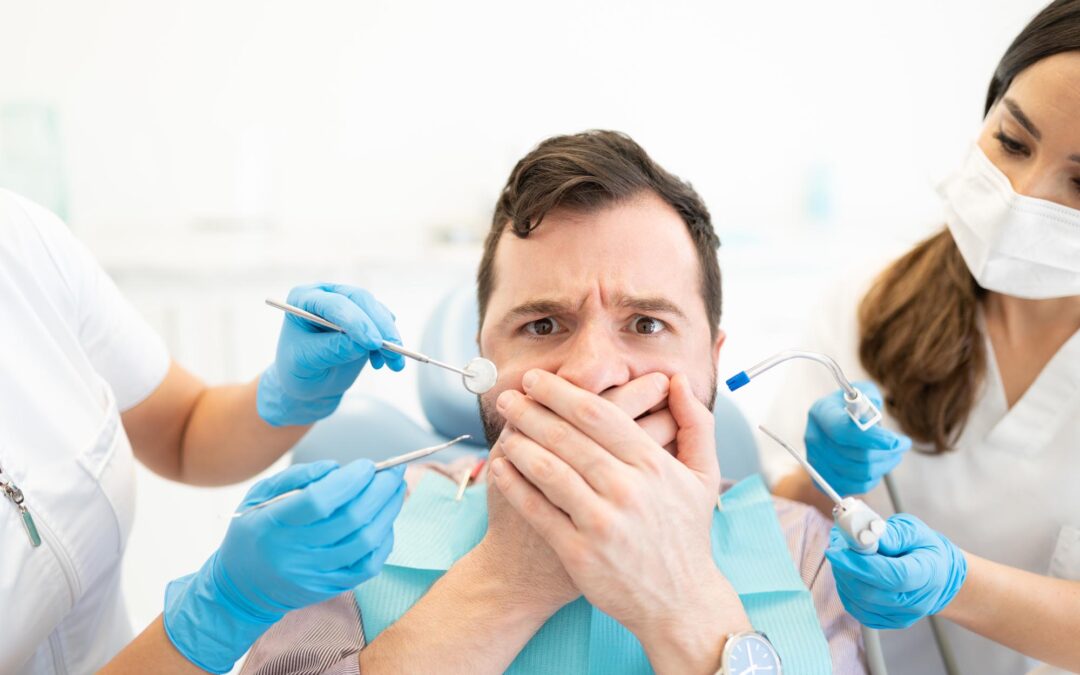Eye Movement Desensitization and Reprocessing (EMDR) therapy is a groundbreaking approach in addiction treatment, offering hope to individuals struggling with substance use disorders. This innovative therapeutic method uses bilateral stimulation—typically through guided eye movements—to help patients process traumatic memories and negative experiences that often fuel addictive behaviors.
EMDR therapy has transformed the addiction treatment landscape by addressing the deep-rooted trauma that frequently underlies substance abuse. Research shows that up to 80% of individuals seeking addiction treatment have experienced significant trauma in their lives. By targeting these underlying issues, EMDR helps break the cycle of addiction at its core.
The therapy’s unique approach allows patients to:
- Process traumatic memories without reliving the intense emotional pain
- Develop healthier coping mechanisms
- Reduce cravings and triggers associated with substance use
- Build resilience against future challenges
At CNV Detox in Los Angeles, EMDR therapy is integrated into comprehensive treatment plans, providing clients with powerful tools for lasting recovery. This evidence-based treatment has shown remarkable success in helping individuals overcome both addiction and its underlying causes.
Understanding EMDR
Eye Movement Desensitization and Reprocessing (EMDR) is a therapeutic approach that was discovered by Dr. Francine Shapiro in 1987. While taking a walk in the park, she noticed that her distressing thoughts became less intense as her eyes moved back and forth. This observation led to the creation of a structured therapy method that has revolutionized the treatment of trauma.
How EMDR Works
EMDR works by activating the brain’s natural healing mechanisms through bilateral stimulation, which usually involves eye movements, taps, or sounds. This process helps the brain reprocess traumatic memories that are stored in the nervous system, reducing their emotional impact and allowing healthier neural connections to develop.
The Impact of Trauma on Addiction
Trauma has a significant influence on addiction, resulting in a complex combination of psychological and physiological reactions:
- Emotional Numbing: Many individuals resort to using substances as a means to escape from their traumatic memories.
- Disrupted Stress Response: Trauma can disrupt the normal functioning of the brain’s stress response system, leading to changes in brain chemistry and an increased vulnerability to addiction.
- Maladaptive Coping: Individuals with post-traumatic stress disorder (PTSD) may turn to substances as a way to self-medicate and alleviate their symptoms.
The Connection Between PTSD and Substance Use Disorders
Research indicates that 59% of individuals diagnosed with PTSD also develop substance use disorders. This connection can be attributed to several factors:
- Shared neural pathways that are affected by both conditions
- Similar risk factors and triggers that contribute to the development of both disorders
- Overlapping symptoms that reinforce each other, making it difficult for individuals to break free from the cycle of trauma and addiction
How EMDR Addresses Co-Occurring PTSD and Substance Use Disorders
EMDR specifically targets these interconnected issues by focusing on the root cause of trauma while also providing tools to manage addiction triggers. This dual-action approach makes it particularly effective for treating individuals who are dealing with both PTSD and substance use disorders simultaneously.
The Process of EMDR Therapy
EMDR therapy follows a structured eight-phase approach designed to address traumatic memories and install positive beliefs:
- History Taking: Your therapist gathers information about your past experiences and identifies specific memories to target.
- Preparation: You learn self-soothing techniques and establish a sense of safety before processing begins.
- Assessment: The target memory is activated, and you identify related negative beliefs, emotions, and physical sensations.
- Desensitization: Through bilateral stimulation (eye movements, taps, or sounds), you process the traumatic memory until it becomes less distressing.
- Installation: Positive beliefs replace negative ones associated with the memory. These new beliefs might include “I am safe now” or “I can handle this.”
- Body Scan: You mentally scan your body to identify any remaining physical tension or discomfort.
- Closure: Each session ends with stabilization techniques to ensure you feel grounded and calm.
- Reevaluation: Progress is assessed at the beginning of subsequent sessions to ensure lasting positive changes.
The desensitization phase plays a crucial role in reprocessing traumatic memories. During this phase, your brain creates new neural pathways, allowing you to store memories without the intense emotional charge they once carried.
The installation of positive beliefs serves as a cornerstone of EMDR therapy. These new beliefs help create resilience and empower you to face future challenges with confidence, particularly in your recovery journey.
Utilizing EMDR for Addiction Treatment
EMDR therapy creates powerful shifts in addiction treatment by targeting the deep-rooted trauma patterns that often drive substance use. This therapeutic approach helps you:
- Break the cycle between traumatic memories and addictive behaviors
- Process difficult emotions without turning to substances
- Develop healthier responses to stress and triggers
How EMDR Works in Addiction Treatment
The treatment combines bilateral stimulation with focused memory processing to help you reframe past experiences. During sessions, you’ll work with your therapist to identify specific memories, sensations, or beliefs that trigger substance use. These triggers might include:
- Childhood trauma or neglect
- Physical or emotional abuse
- Loss of loved ones
- Work-related stress
- Relationship difficulties
Coping Strategies Taught in EMDR Therapy
Your therapist guides you through processing these experiences while teaching practical coping strategies:
- Grounding techniques to stay present during intense emotions
- Mindfulness practices to recognize triggers early
- Self-soothing methods to manage cravings
- Boundary-setting skills for healthier relationships
The Impact of EMDR on Neural Pathways
EMDR’s effectiveness in addiction treatment stems from its ability to address both psychological and physiological responses to trauma. The therapy helps rewire neural pathways, creating new associations that support recovery rather than reinforce addictive patterns.
Building Skills for Long-Term Sobriety
As you progress through treatment, you’ll develop a stronger sense of self-control and emotional regulation. These skills prove essential for maintaining long-term sobriety and building a sustainable recovery foundation.
Integrating EMDR into Comprehensive Addiction Recovery Plans
EMDR therapy works best as part of a multi-faceted treatment approach. A comprehensive addiction recovery plan combines EMDR with:
- Group Therapy Sessions: Shared experiences and peer support enhance the healing process
- Individual Counseling: One-on-one sessions to address personal challenges
- Family Therapy: Healing relationships damaged by addiction
- Life Skills Training: Building practical tools for long-term sobriety
The integration of these services creates a robust support system. EMDR sessions can target specific traumas while group therapy provides social connection and accountability. Individual counseling, such as addiction counseling, reinforces coping strategies learned during EMDR, and family therapy heals interpersonal wounds.
A skilled treatment team coordinates these various therapeutic approaches. Your therapists work together to track progress, adjust treatment plans, and ensure each component complements the others. This synchronized approach maximizes the effectiveness of EMDR therapy while providing comprehensive support for your recovery journey.
Effectiveness of EMDR in Treating Co-occurring Disorders Like Addiction and Mental Health Conditions
EMDR therapy has shown great success in treating co-occurring disorders, especially when substance use is combined with conditions such as:
- Depression
- Anxiety disorders
- Post-traumatic stress disorder
- Bipolar disorder
Understanding Co-occurring Disorders
Research indicates that 60% of individuals dealing with addiction also struggle with mental health issues. These co-occurring disorders create a complex network of symptoms that influence one another. Trauma often serves as the underlying factor in this connection, acting as a trigger for both substance use and mental health problems.
How EMDR Works for Co-occurring Disorders
EMDR’s unique approach targets these interconnected challenges by:
- Processing traumatic memories that contribute to both conditions
- Alleviating emotional distress linked to past experiences
- Strengthening resilience against future triggers
- Cultivating healthy coping strategies
The therapy’s ability to address root causes makes it particularly effective for treating co-occurring disorders. Patients report significant improvements in both their addiction symptoms and mental health conditions after EMDR treatment, with many experiencing reduced cravings and enhanced emotional regulation.
Considerations for Safe and Effective EMDR Therapy Sessions with Skilled Clinicians
A safe therapeutic environment is essential for successful EMDR therapy. Licensed EMDR practitioners create this environment by:
- Setting clear boundaries and expectations
- Keeping session structures consistent
- Providing emotional support during intense processing
- Using grounding techniques when necessary
Skilled clinicians play a crucial role in guiding clients through challenging emotional experiences. They:
- Monitor client reactions and adjust the therapy pace
- Recognize signs of emotional overwhelm
- Help clients develop effective coping mechanisms
- Ensure proper closure after each session
The therapeutic relationship between client and clinician creates a foundation of trust essential for processing traumatic memories. EMDR practitioners receive specialized training to:
- Assess client readiness for trauma processing
- Guide bilateral stimulation effectively
- Manage emotional responses during sessions
- Support clients through difficult memory reprocessing
A qualified EMDR therapist maintains professional boundaries while offering compassionate support throughout the healing journey.
Transforming Addiction Treatment with EMDR at CNV Detox
At CNV Detox, we use EMDR therapy as a key part of our addiction treatment program. We understand that unresolved trauma is often linked to substance use disorders. Our experienced clinicians use EMDR techniques to assist clients in:
- Processing deeply rooted traumatic experiences
- Developing resilient coping mechanisms
- Building emotional stability for long-term sobriety
A Healing Environment for Trauma Recovery
Our facility takes a trauma-informed approach, creating a safe space for clients to explore and resolve their past experiences. During specific EMDR sessions, clients at CNV Detox work through their trauma triggers, laying the groundwork for lasting recovery. This cutting-edge treatment method aligns with our commitment to addressing both the visible signs and underlying causes of addiction.
Addressing Co-Occurring Mental Health Issues
We recognize that many individuals struggling with addiction also face mental health challenges. That’s why we provide comprehensive dual diagnosis therapy that effectively tackles both substance use and mental health disorders, including serious conditions such as those outlined by the SAMHSA.
If you or someone you care about is looking for assistance, please reach out to us. We are here to help 24/7 with drug and alcohol detoxification in California and can admit new patients into our residential rehabilitation program on the same day.
Innovative Therapies for Your Recovery Journey at CNV Detox
Your path to recovery deserves a comprehensive approach that addresses both addiction and underlying trauma. CNV Detox offers a range of innovative therapies alongside EMDR:
- Cognitive Behavioral Therapy (CBT) – Restructure negative thought patterns
- Dialectical Behavior Therapy (DBT) – Build emotional regulation skills
- Holistic Healing – Including meditation, yoga, and mindfulness practices
- Group Support – Connect with others on similar recovery journeys
Ready to start your healing journey? CNV Detox’s expert team creates personalized treatment plans combining these evidence-based therapies. Contact us to learn how we can support your path to lasting recovery.





